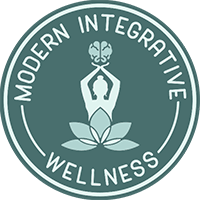- 245 5th Ave, 3rd Floor, New York, NY 10016
Seasonal Affective Disorder
Seasonal Affective Disorder in New York, NY
Seasonal affective disorder, also known as SAD, is a depressive disorder that occurs in accordance with the seasons. Most people with seasonal affective disorder experience symptoms in the fall and winter seasons. More rarely, patients experience this condition during the spring and summer. It is important to seek medical attention for this condition not only to maintain mood stability, but to prevent symptoms from worsening.
Risk Factors for SAD
While the exact cause of seasonal affective disorder remains unknown, research indicates that it may be partially hereditary since a person with a close relative with SAD is more at risk. Diminishing daylight appears to be a factor since the disorder is more prevalent in those who live farther from the equator and have to cope with longer periods of winter darkness. The absence of light seems to affect the levels of melatonin and serotonin in the brain, as well as to disturb circadian rhythms. For unknown reasons, females are more likely to be affected by seasonal affective disorder.
Symptoms of SAD
Depending on the time of year, the symptoms of seasonal affective disorder may vary. Symptoms of seasonal affective disorder in the fall and winter may include:
- Anxiety
- Overeating, particularly of carbohydrates
- Weight gain
- Sadness, hopelessness, pessimism
- Irritability
- Loss of energy
- Loss of interest in normal activities
- Loss of sex drive
- Excessive sleeping, sleepiness during the day
- Trouble concentrating
- Social withdrawal
For the rare patients troubled by reverse SAD, symptoms approximate the symptoms of hypomania complicated by depressive symptoms. Symptoms of SAD that occur in spring and summer may include:
- Anxiety
- Insomnia
- High energy level
- Irritability or agitation
- Intensified sex drive
- Loss of appetite, weight loss
- Physical problems, such as headaches
In extreme cases, seasonal affective disorder may evolve into bipolar disorder and patients may develop suicidal thoughts or actions. This is why, although relief may be experienced when the seasons change, it is important to seek treatment for this condition.
Diagnosing SAD
Seasonal affective disorder is diagnosed through a physical examination and psychological evaluation. To rule out other conditions, blood tests may also be administered.
Treatment for SAD
Various treatment options are available for seasonal affective disorder.
Psychotherapy
Psychotherapy, particularly cognitive behavioral therapy, may help individuals to recognize negative thoughts and replace them with positive ones. Talking to a therapist about the symptoms can also provide support and keep the patient from feeling isolated.
Light Box Therapy
Light therapy has been found to be effective in preventing or counteracting depression in patients with SAD. A device known as a light box is used to provide the patient with bright light similar to natural lighting as the days grow shorter, compensating for the reduced daylight hours of winter.
Treatment is started in the fall, before the onset of symptoms. Patients are typically advised to spend about 30 minutes each day a few feet away from the light box, usually in the early morning to imitate sunrise, and to keep their eyes open without looking directly at the light source.
If the patient is already suffering depressive symptoms when the light therapy is begun, the treatment should provide relief within 3 to 4 weeks. There is some risk of headaches or eyestrain from light therapy.
Medication
For patients whose condition doesn‘t respond to the above treatments, antidepressants may also be prescribed.
Home Remedies
As with other forms of depression, keeping to a healthy routine is important. Patients are encouraged to eat a nourishing diet and to get enough exercise and the appropriate amount of sleep. It is also necessary for patients with SAD to refrain from alcohol and illegal drugs which will exacerbate the condition. Since this disorder can become life-threatening, treatment should be sought for any depression that recurs at the same time every year.
Additional Resources
- Adult ADHD
- Bipolar Disorder
- Body Dysmorphic Disorder
- Chronic Fatigue Syndrome
- Cognitive Behavioral Therapy
- Depression
- Dissociative Disorders
- Generalized Anxiety Disorder
- Insomnia
- Obsessive Compulsive Disorder
- Panic Disorder
- Personality Disorders
- Phobias
- Post-Traumatic Stress Disorder
- Postpartum Depression
- Seasonal Affective Disorder
- Self-Injury
- Sleep Disorders
- Social Anxiety Disorder
- Stress Management






Hear From Our Client Testimonials
Real People, Real Testimonials.

